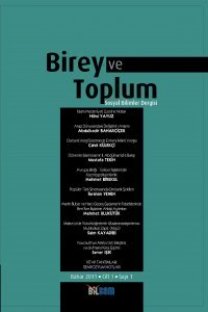Öğrenme Kuramlarına Göre Çocuklara Yabancı Dil Öğretimi
___
Bialystok, E & Hakuta, K. (1999). Confounded Age: Linguistic and CognitiveFactors in Age Differences for Second Language Acquisition. In D. Birdsong
(Ed.), Second Language Acquisition and the Critical Period Hypothesis (pp.
-181). New Jersey, Lawrence Erlbaum Associates, Publishers
Brewster, J., Ellis, G. ve Girard, D. (2007). The Primary English Teacher’s Guide.
Essex: Pearson Education Limited.
Brown, H. D. (2007). Principles of Language Learning and Teaching. New York:
Pearson Education.
Davies, A. (2012). Nativism. The Encyclopedia of Applied Linguistics.
Retrieved November 15,2013from http://onlinelibrary.wiley.com/
doi/10.1002/9781405198431.wbeal0856/pdf.
Dimroth, C. (2008). Perspectives on Second Language Acquisition at Different
Ages. In J. Philp, R. Oliver and A. Mackey (Eds.), Second Language Acquisition
and the Younger Learners: Child’s Play? (pp. 53-79). Amsterdam: John Benjamins
Publishing Company.
Dörnyei, Z. (2005). The Psychology of the Language Learner: Individual Differences
in Second Language Acquisition. Mahwah, New Jersey: Lawrence Erlbaum
Associates.
Fromkin, V. & Rodman, R. (1993). An Introduction to Language. Fort Worth:
Harcourt Brace Jovanovich.
Gordon, T. (2007). Teaching Young Children A Second Language. London: Praeger.
Jones, G. M. & Brader-Araje, L. (2002.) The Impact of Constructivism on Education:
Language, Discourse, and Meaning. American Communication Journal 5
(3). Retrieved November 15, 2013 from http://ac-journal.org/journal/vol5/iss3/
special/jones.pdf.
Larsen-Freeman, D. & Anderson, M. (2011). Techniques & Principles in Language
Teaching. Oxford: Oxford University Press.
Olivares, R. A. & Lemberger, N. (2002). Identifying and Applying the Communicative
and the Constructivist Approaches to Facilitate Transfer of Knowledge
in the Bilingual Classroom. International Journal of Bilingual Education and
Bilingualism 5 (1), 72-83.
Philp, J., Mackey, A., ve Oliver, R. (2008). Child’s play? Second Language Acquisition
and the Younger Learner in Context. In J. Philp, R. Oliver and A. Mackey
(Eds.), Second Language Acquisition and the Younger Learners: Child’s Play?
(pp. 3-23). Amsterdam: John Benjamins Publishing Company.
Richards, J. C. & Rodgers, T. S. (1999). Approaches and Methods in Language
Teaching: A Description and Analysis. Cambridge: Cambridge University
Press.
Richards, J. C. (2006). Communicative Language Teaching Today. Cambridge:
Cambridge University Press.
Shin, J. K. (2014). Teaching Young Learners in English as a Second/Foreign Language.
In M. C. Murcia, D. M. Brinton, & M. A. Snow (Eds)., Teaching English
as a Second or Foreign Language (4th Ed., pp. 550-567). Boston: National Geographic
Learning/Cengage Learning.
Swan, M. (2005). Legislation by Hypothesis: The Case of Task-Based Instruction.
Applied Linguistics 26 (3), 376-401.
Von Glaserfeld, E. (1982). An Interpretation of Piaget’s Constructivism. Revue
Internationale de Philosophie 36 (4), 612–635.
Von Glaserfeld, E. (1989). Cognition, construction of knowledge, and teaching.
Synthese 80, 121-140.
- ISSN: 2146-4634
- Yayın Aralığı: Yılda 2 Sayı
- Başlangıç: 2011
- Yayıncı: Bilgi Yolu Eğitim Kültür ve Sosyal Araştırmalar Merkezi: BİLSAM
‘İhlsözlük’te Dindar Gençliğin Özneleşmesi: İmam Hatipli, Ahlaklı ve Entelektüel
An Evaluation of the Academic Studies Focusing on the Religious Education Teachers (in Turkey)
Öğrenme Kuramlarına Göre Çocuklara Yabancı Dil Öğretimi
Toplumla “Yüzleşme” Yüz Nakli Üzerine Fenomenolojik Bir Çözümleme
Sosyal Statülerine Göre Samsun Canik Sancağında Vakıf Kurucuları
Modern Mekânda Kutsal Deneyimi Kernek’te Yeniden Üretilen Kutsal, Mit ve Ritüel
İslam’ı İncelemekten Müslümanları İncelemeye: Bir İslam Antropolojisine Doğru
Reformasyon’dan Günümüze Evanjelik Hıristiyanlık
Muhammed Abduh’un Moderniteye Katkısı
